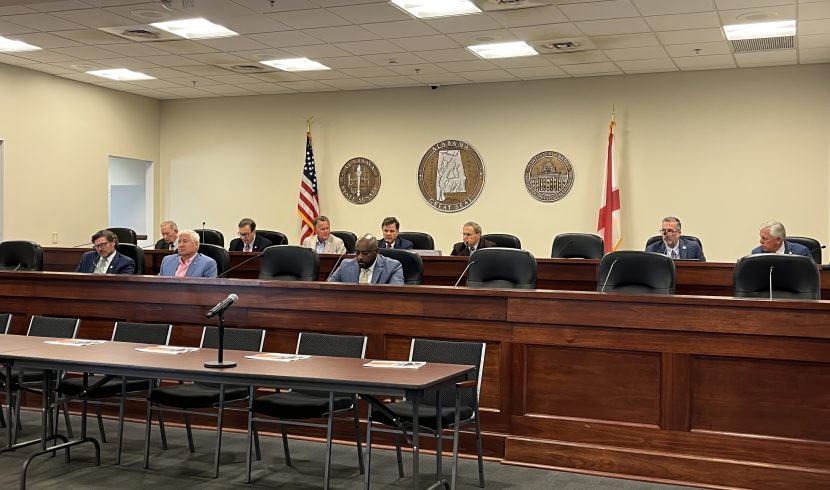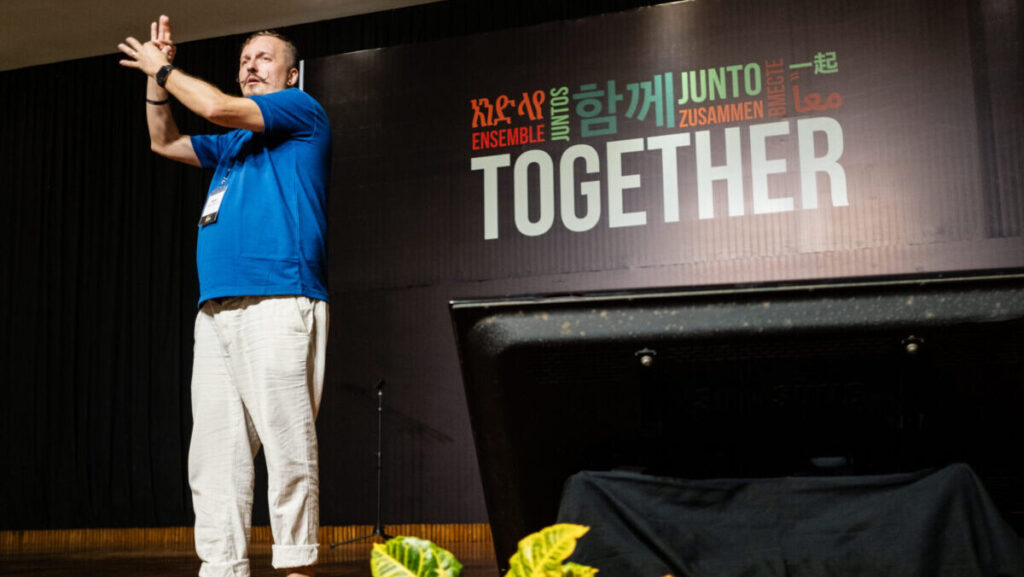NATIONAL ADOPTION DAY — NOV. 19
National Adoption Day is a collective national effort to raise awareness of the more than 100,000 children in foster care waiting to find permanent, loving families. A coalition of national partners — Dave Thomas Foundation for Adoption, Congressional Coalition on Adoption Institute, The Alliance for Children’s Rights and Children’s Action Network — sponsor National Adoption Day.
Angela Bennett knows better than most the frustrations and joys of adoption. She and her husband, Chris, became foster parents in October 2009, hoping to adopt two sisters in the care of a foster family in their church.
The girls were eventually adopted by another family, but the Bennetts pursued God’s call to foster care ministry. Seven years later, the Bennetts are parents of six children, two biological and four adopted through foster care placements. Life is busy, especially since the Bennetts also continue to foster as many as six children at any given time, but Angela Bennett wouldn’t have it any other way.
‘Forever home’
“When you think you can’t do it any more, a child comes and hugs you and tells you he loves you, and it’s all worth it,” she said. “Especially for older children like my son, who was 12 when we adopted him. All he wanted was a forever home so no one could take him away again. He has that now.”
The Bennett children have a lot in common with the majority of children currently in care of the Alabama Department of Human Resources (DHR) who are waiting for their forever families. Of the more than 5,500 children in foster care in Alabama, approximately 225 are eligible for adoption. Most are already in school and many are teenagers.
By the time a child in the state foster care system is available for adoption, all avenues for reunification with the child’s biological family have been exhausted and the courts have terminated parental rights. These waiting children usually live in group homes or with foster families who do not plan to adopt them. Organizations like Heart Gallery Alabama seek to make these children known to prospective adoptive families, according to the organization’s executive director, Michelle Bearman-Wolnek.
Approximately 500 children have been adopted from foster care each year in the state for the past several years. In fiscal year 2015, 512 adoptions from foster care were completed in Alabama, Bearman-Wolnek said. For fiscal year 2016, the number was 503, according to Barry Spear, public information manager for Alabama DHR.
Ticking clock
Alabama has worked hard to speed up the process of parental rights termination in recent years, said Gayle Watts, CEO of Children’s Aid Society of Alabama, another agency that supports children in the foster care system and works to find homes for them.
“As these children grow older, the clock is ticking. No one wants them stuck in the court system,” she said. “What we need most in Alabama is families for older youth and sibling groups.”
The National Center on Adoption and Permanency estimates that 40 percent of adoptions in the United States are from the foster care system. Another 40 percent are by stepparents. International and private infant adoptions have decreased in recent years for several reasons.
For one thing fewer infants are available for adoption, the result of increased access to birth control, pregnancy prevention programs, abortion and wider acceptance of and support for single motherhood.
In response, many adoptive families worked with international agencies in the 1990s and early 2000s to adopt children from other countries. At the peak of this movement in 2004, 22,989 children were adopted internationally from countries including China, Russia and Guatemala.
Steady decline
Since then, the number of international adoptions has steadily declined because of stricter international treaty regulations and improvements in child welfare systems in many countries. In 2015, 5,647 children were adopted internationally, according to the U.S. Department of State. Most were between the ages of 1 and 12.
As the face of adoption has changed, ministries have responded, said Louise Green, senior regional vice president (Central Alabama) for Alabama Baptist Children’s Homes & Family Ministries (ABCH). For example, maternity ministries for unwed mothers were phased out as the number of single women placing babies for adoption decreased, Green said. The focus at ABCH moved toward care for children, many of whom are referred by DHR and some of whom are adopted by their foster families.
‘Orphan care’
Green attributes the steady numbers in adoption from foster care in Alabama to an increased emphasis in churches on caring for children who need permanent families, often called “orphan care.”
“Because of the church ministries promoting care for children, our foster care program has grown. We have been able to have more children placed with us and have seen an increase in foster to adopt. The Church has been instrumental in that, and we have been blessed to come alongside and partner with them and provide more opportunities for Christian homes and foster care and Christian parents who want to adopt,” Green said.
Still, the process of adoption, especially of an older child from foster care, scares many prospective families, Watts said.
Uncertainty is normal
“They aren’t sure how they might handle a child who has a history with someone else or challenges. Sometimes they say they believe they will feel a closer bond with a younger child. People are often afraid,” Watts said.
Angela Bennett wants people to know those fears can be overcome and the challenges of the process are worth the reward.
“There’s more blessing for the parent than for the child,” she said. “A lot of people think they can’t love an adopted child as much as a birth child but it isn’t true. No matter how long they stay, each child who comes into our home becomes part of our family and part of our heart.”
To read about adoption myths, click here.






Share with others: